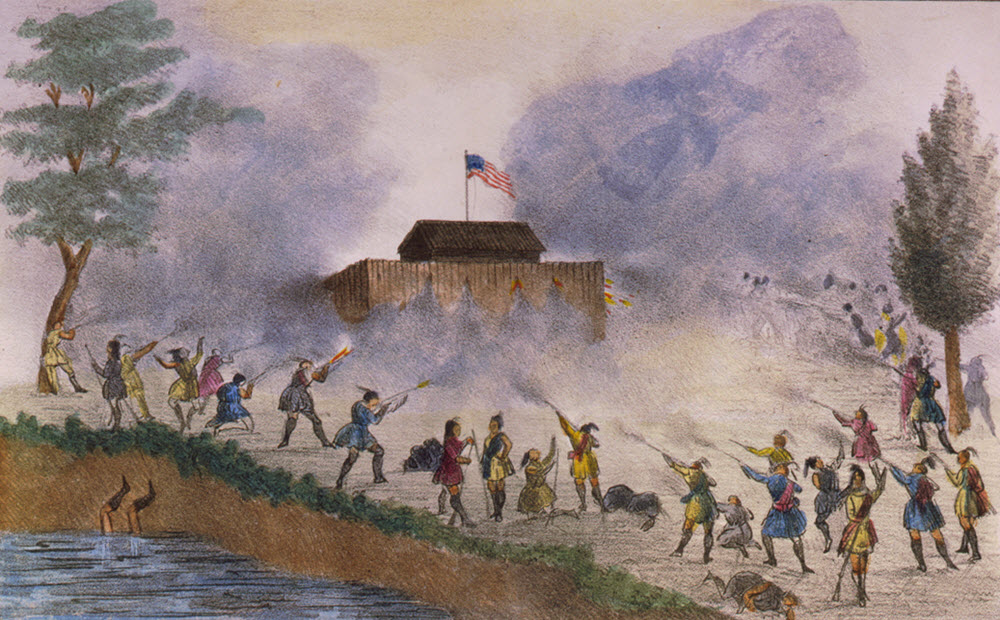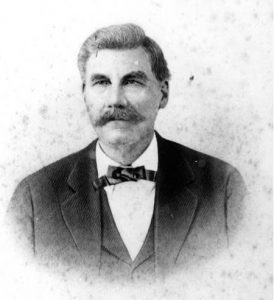Guide to Fort Ogden, Florida
The Second Seminole War
The Second Seminole War, also known as the Florida War, was fought from 1835 to 1842 between the United States and the Seminole Indians in Florida. It was the second of three conflicts between the United States and the Seminole, and is known to be the longest of the Indian Wars in U.S. history.
The war stemmed from tensions over land and the U.S. government’s attempts to forcibly relocate the Seminole people to the Indian Territory west of the Mississippi River, as part of the broader policy known as the Indian Removal Act of 1830.
One of the most notable Seminole leaders during the war was Osceola, who became a symbol of Seminole resistance. He led several successful attacks against U.S. forces but was captured under a flag of truce in 1837 and died in captivity in 1838.

The Treaty of Payne´s Landing
Drafted in 1832, The Treaty of Payne’s Landing was intended to cede Seminole lands in Florida to the U.S. government and relocate the people to the Indian Territory. The treaty was met with resistance from many Seminole leaders, who disputed its legitimacy and refused to leave their ancestral lands.
The U.S. Senate ratified the treaty in April 1834. According to the treaty, the Seminoles had three years to move west of the Mississippi. The U.S. Government interpreted the three years as starting in 1832 and expected the Seminoles to be move in 1835 or earlier.
Wiley Thompson at Fort King was appointed Seminole agent and given the task of persuading the Seminoles to move. He met with Seminole chiefs at Fort King in October 1834 and they informed him that they had not intentions of moving and that they did not considered themselves bound by the treaty. Thompson requested reinforcements for Fort King and Fort Brooke, and reported that the Seminoles had purchased an unusually large quantity of powder and lead.
After another meeting in March 1835, the Seminole leaders confirmed their decision to not move west. Thompson and the chiefs got into an argument, and General Clinch had to intevene to prevent bloodshed. Eventually, eight of the leaders agreed to move west, but asked for a delay until the end of the year, a request that Thompson and Clinch granted. Five of the most important Seminole leaders did not aggree to the move, including Micanopy of the Alachua Seminoles.
The tension grew worse when a group of European Americans assaulted some Native Americans sitting around a campfire. Two more Native Americans came up during the assault and opened fire on the European Americans. One Native American was killed and another one wounded, and three European Americans were wounded. In August 1835, a U.S. soldier was killed by Seminoles while carrying mail from Fort Brooke to Fort King.
The war
The Second Seminole War began in earnest on December 28, 1835, with the Dade Massacre, where a group of Seminole warriors ambushed and killed over 100 U.S. soldiers led by Major Francis L. Dade as they marched from Fort Brooke (present-day Tampa) to Fort King (present-day Ocala). This event marked the beginning of widespread violent conflict.
The Seminole utilized guerrilla tactics, taking advantage of Florida’s dense swamps and forests to launch surprise attacks and evade U.S. forces. The challenging terrain and the Seminole’s knowledge of the land made conventional military campaigns difficult and costly for U.S. Troops.
The war dragged on for years, with neither side able to secure a decisive victory. The U.S. government employed a strategy of attrition, constructing a series of forts and conducting numerous campaigns to try to wear down the Seminole. By 1842, the U.S. declared the war over, although no formal peace treaty was signed. The majority of the Seminole population had been either killed, captured and relocated to the Indian Territory, or forced deeper into the Florida Everglades.
Aftermath
Despite the official end of the war, small bands of Seminole continued to live in the Florida Everglades, effectively eluding full removal. This resistance led to the Third Seminole War (1855-1858), which ultimately resulted in the removal of most of the remaining Seminole to the Indian Territory.
Legacy
The Second Seminole War had a profound impact on the Seminole people, the U.S. military, and U.S. policy toward Native Americans. It highlighted the determination of the Seminole to resist removal and maintain their way of life. For the United States, it represented a costly and morally troubling chapter in the broader narrative of westward expansion and Native American removal.
The war underscores the complexities and tragedies of U.S. policies toward Native American peoples, a legacy that continues to be examined and reassessed today.



